Johanna Moore, Andie Parry, and Nicholas Carl
The Iran Update provides insights into Iranian and Iranian-sponsored activities abroad that undermine regional stability and threaten US forces and interests. It also covers events and trends that affect the stability and decision-making of the Iranian regime. The Critical Threats Project (CTP) at the American Enterprise Institute and the Institute for the Study of War (ISW) provides these updates regularly based on regional events. For more on developments in Iran and the region, see our interactive map of Iran and the Middle East.
Note: CTP and ISW have refocused the update to cover the Israel-Hamas war. The new sections address developments in the Gaza Strip, the West Bank, Lebanon, and Syria, as well as noteworthy activity from Iran’s Axis of Resistance. We do not report in detail on war crimes because these activities are well-covered in Western media and do not directly affect the military operations we are assessing and forecasting. We utterly condemn violations of the laws of armed conflict, Geneva Conventions, and humanity even though we do not describe them in these reports.
Key Takeaways:
- Palestinian militias continued drone and indirect fire attacks into Israel, primarily southern Israel. CTP-ISW did not record any reports of infiltrations or small arms clashes in southern Israel.
- The rate of small arms clashes between Israeli forces and Palestinian militants has continued to fall after peaking on October 13.
- LH expanded its campaign against Israeli forces along the Israel-Lebanon border in terms of pace, location, and actors involved. The IDF spokesperson stated that Iran has instructed LH to escalate against Israel and thereby impose pressure on the IDF while it prepares for ground operations into the Gaza Strip.
- The IDF conducted an airstrike on the Aleppo International Airport, marking the second time that the IDF has struck this location since the war began on October 7.
- Iran and elements of its Axis of Resistance are messaging that the Hamas-Israel war could expand geographically into a multi-front conflict. CTP-ISW is closely monitoring the situation to forecast whether such a scenario is becoming more or less likely.
- Iranian Foreign Affairs Minister Abdollahian met with senior Hamas and Qatari officials during an official visit to Doha.
Gaza Strip
Palestinian militias continued drone and indirect fire attacks into Israel, primarily southern Israel, on October 15. The al Qassem Brigades—Hamas’ militant wing—claimed responsibility for two one-way drone attacks and 12 mortar and rocket attacks.[1] Saraya al Quds—the militant wing of Palestinian Islamic Jihad (PIJ)—claimed responsibility for another 12 mortar and rocket attacks.[2] The Democratic Front for the Liberation of Palestine militia claimed that it conducted two mortar attacks.[3] CTP-ISW recorded reports of five unclaimed mortar and rocket strikes as well.[4] This rate of fire is consistent with CTP-ISW’s previous reporting that Hamas has reduced the frequency of its attacks to conserve its munitions stockpile and prepare for a prolonged war.[5]
CTP-ISW did not record any reports of infiltrations or small arms clashes in southern Israel on October 15.
West Bank
The rate of small arms clashes between Israeli forces and Palestinian militants has continued to fall after peaking on October 13. CTP-ISW recorded eight clashes on October 15 and 13 clashes on October 14—significantly less than the 32 clashes recorded on October 13. Israeli forces are conducting arrest campaigns in the West Bank, which may be contributing to the declining violence.[6] Hamas remains committed to expanding the war to the West Bank, however.[7]
Fatah—the dominant Palestinian political party in the West Bank—organized a march in Ramallah on October 15 to denounce IDF attacks into the Gaza Strip.[8] CTP-ISW has recorded five instances of clashes and four instances of marches in Ramallah since October 7.[9]
South Lebanon and Golan Heights
LH expanded its campaign against Israeli forces along the Israel-Lebanon border in terms of pace, location, and actors involved on October 15. The IDF spokesperson stated that Iran has instructed LH to escalate against Israel and thereby impose pressure on the IDF while it prepares for ground operations into the Gaza Strip.[10]
- LH engaged in small arms clashes with Israeli forces in five border towns and military posts.[11] LH also fired anti-tank missiles at Israeli targets in at least five instances.[12] LH claimed responsibility for these attacks for the third consecutive day. This activity marks a slight uptick in the rate of attacks compared to previous days and an expansion of attacks westward along the Israel-Lebanon border. Most LH attacks on Israeli targets have occurred around Shebaa Farms since the war began on October 7.[13]
- Hamas’s al Qassem Brigades claimed to launch 20 rockets into northern Israel on October 15.[14] LH probably approved the attack in advanced given the extent to which LH controls southern Lebanon and coordinated with other Iranian-backed groups there. The al Qassem Brigades furthermore released a statement on October 15 claiming that its militants infiltrated northern Israel and clashed with Israeli forces.[15]
The IDF conducted an airstrike on the Aleppo International Airport on October 14, marking the second time that the IDF has struck this location since the war began on October 7.[16] The IDF similarly conducted an airstrike on the Damascus International Airport on October 12.[17] A senior official at the Israeli Foreign Affairs Ministry indicated that the strikes are part of an Israeli effort to prevent Iran from moving weapons into Syria and/or opening a front against Israel from there.[18] The Islamic Revolutionary Guard Corps (IRGC) has long used commercial airliners affiliated with the Iranian regime for military transports to Syria throughout the civil war there.
Unidentified militants conducted a rocket attack from Syria into the Golan Heights following the IDF airstrike on Aleppo, possibly as symbolic retaliation.[19] Israeli forces intercepted the rockets and fired artillery back into Syria.[20]
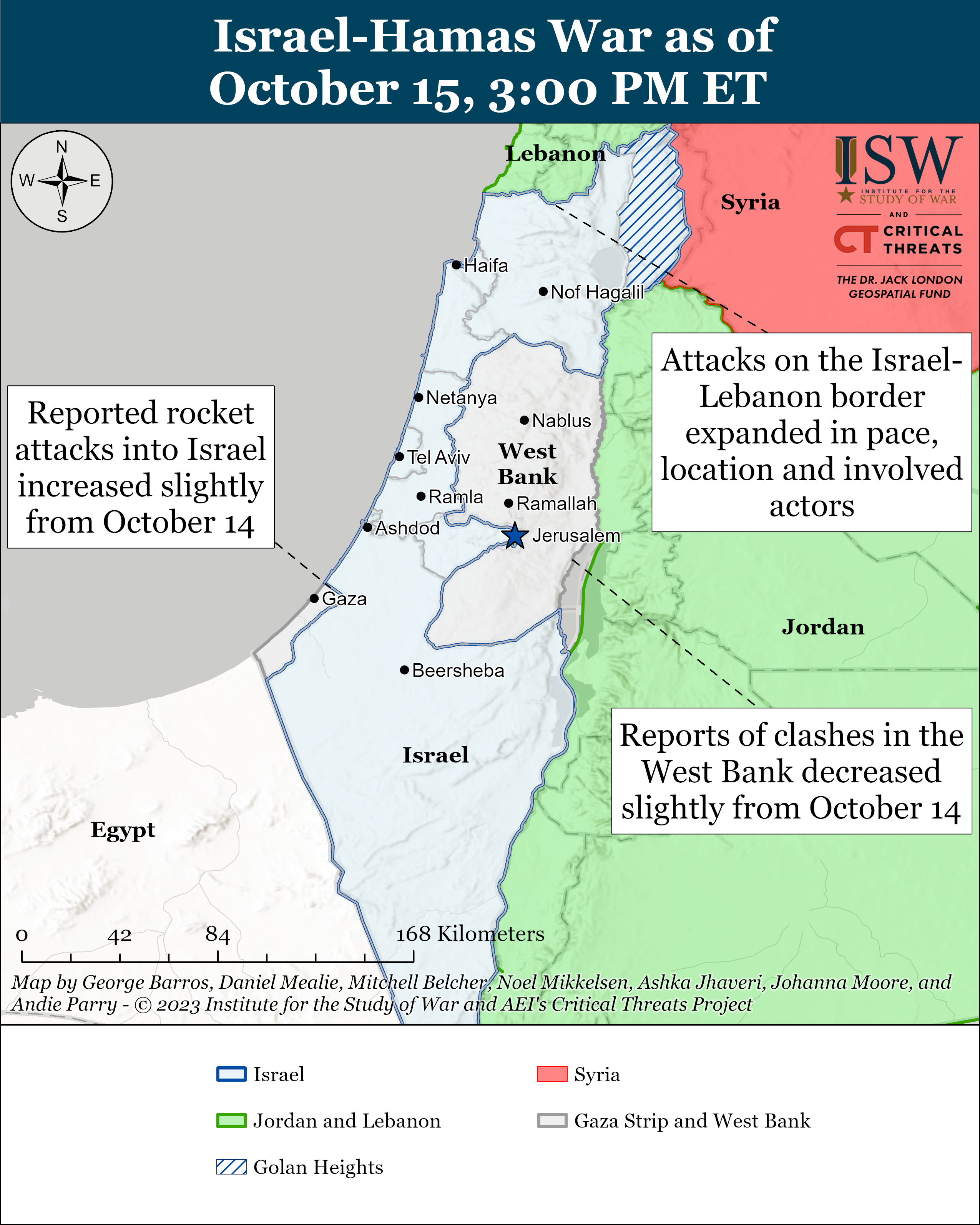
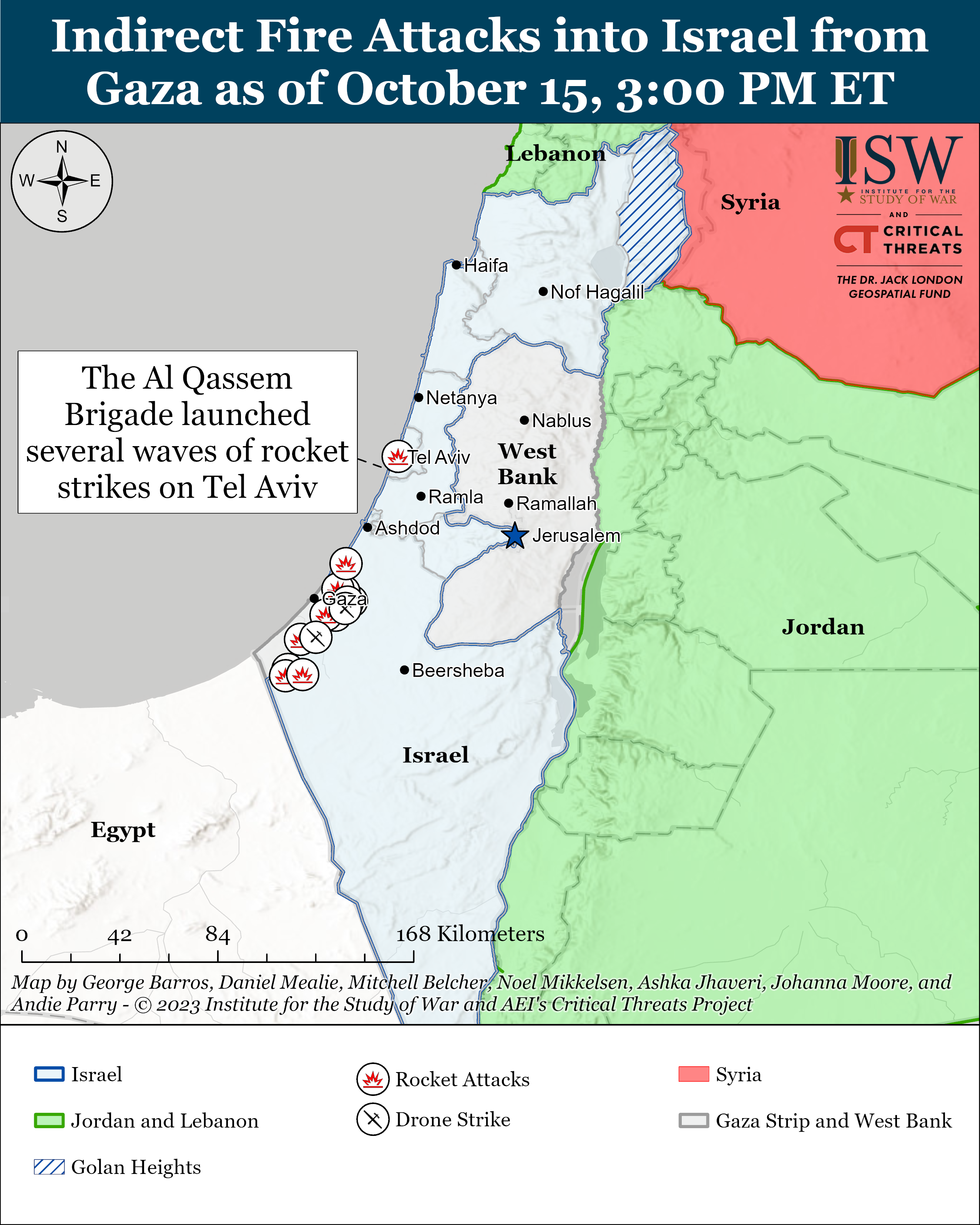
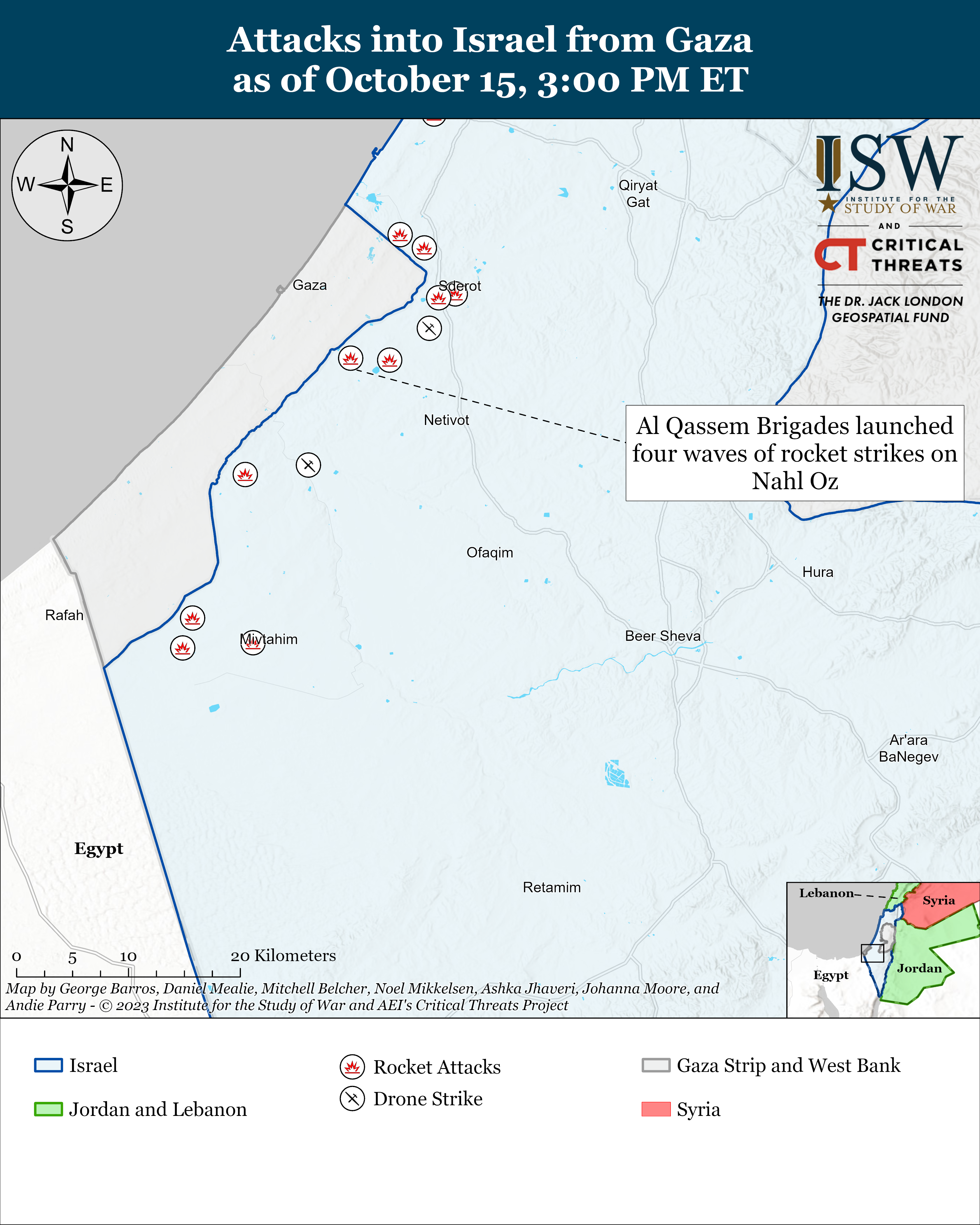
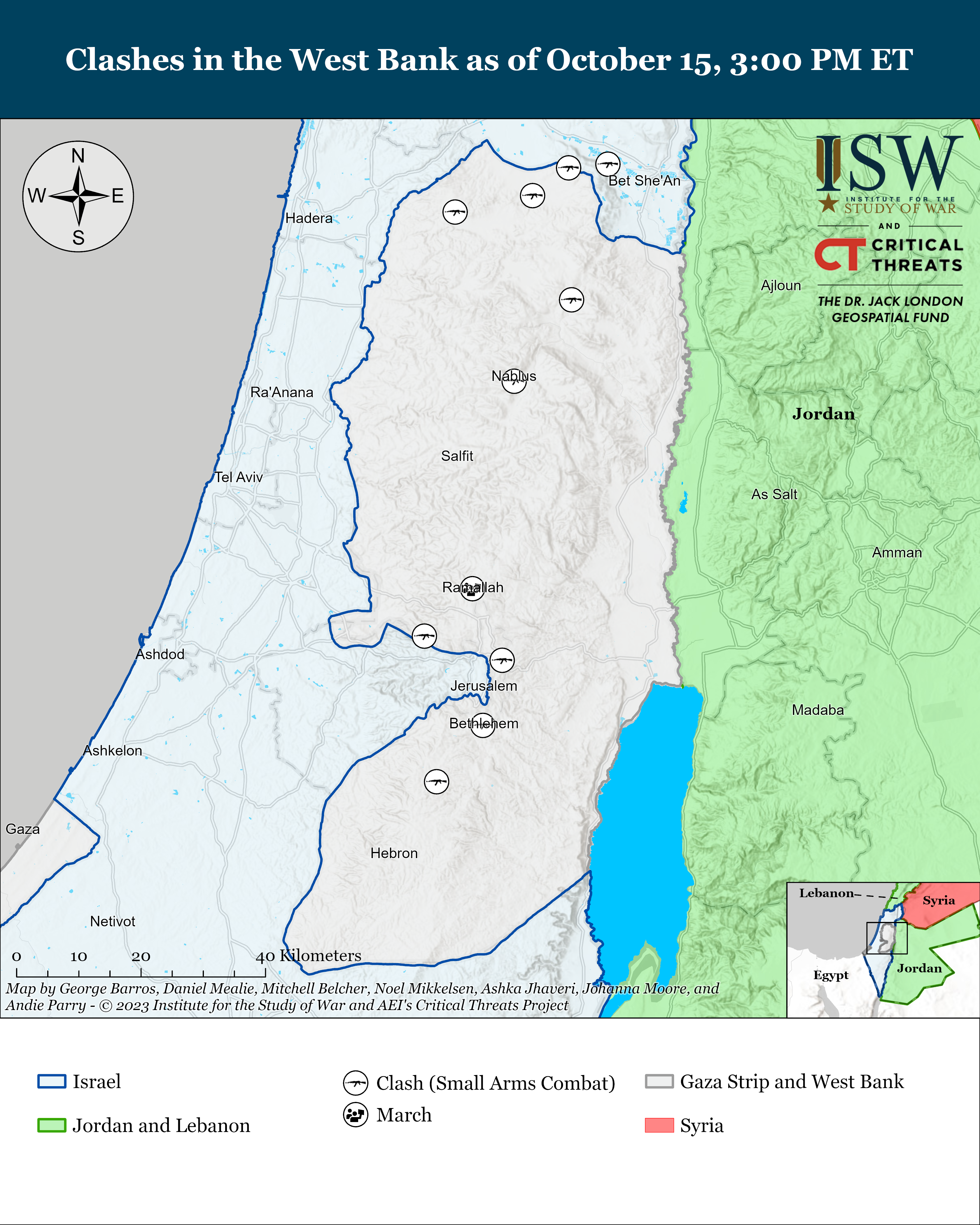
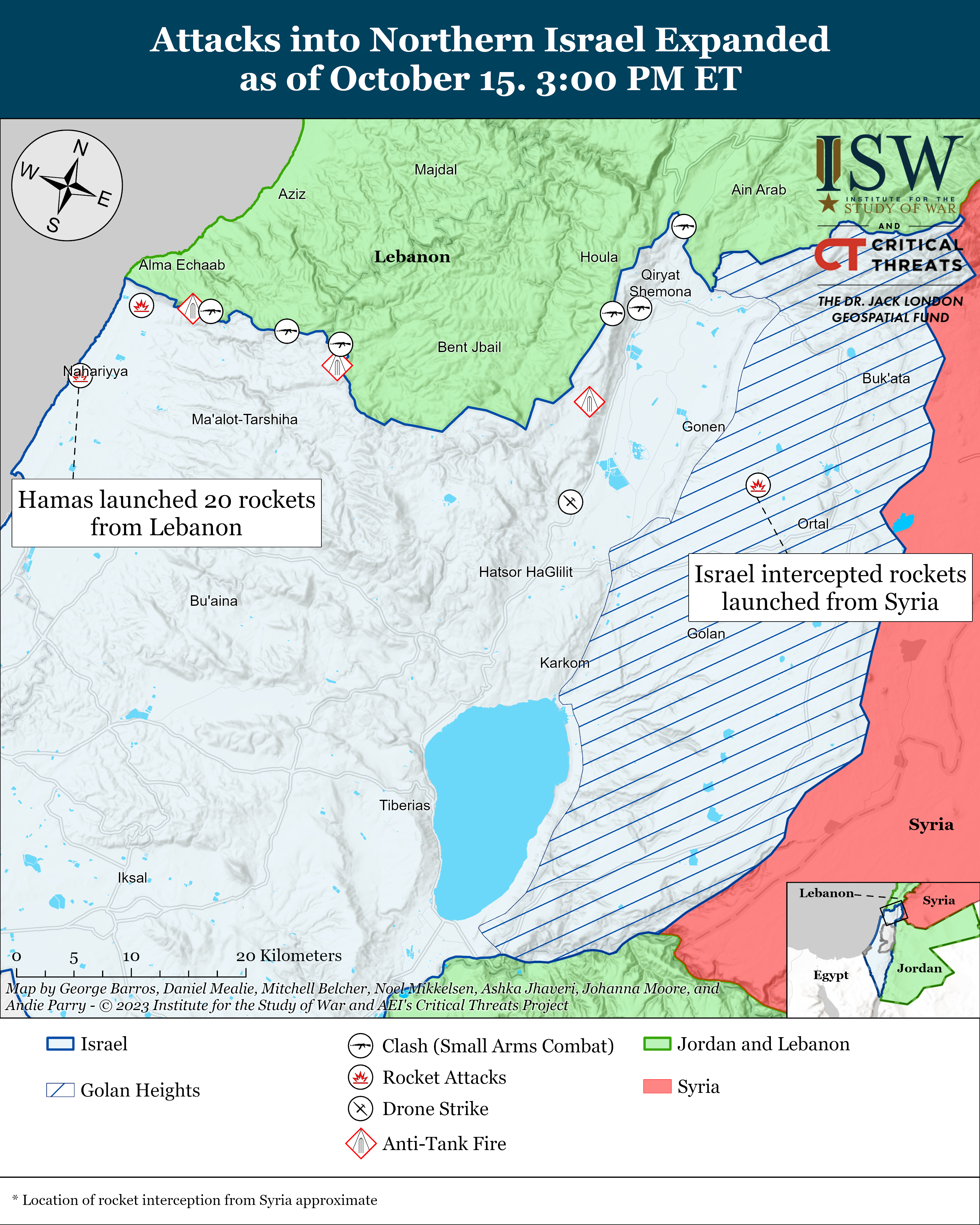
No comments:
Post a Comment